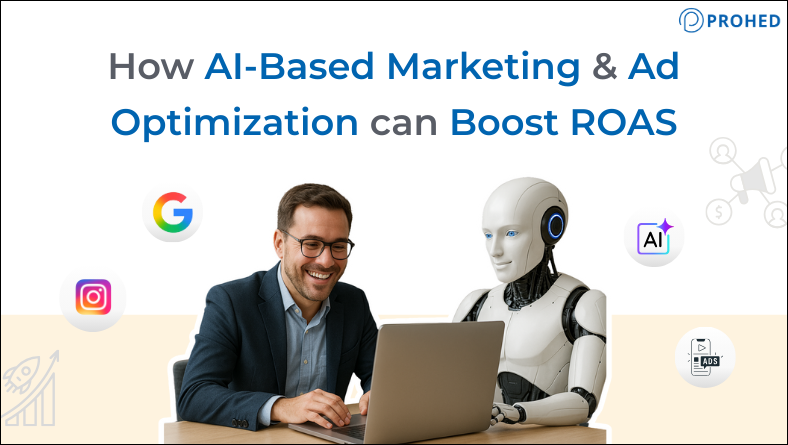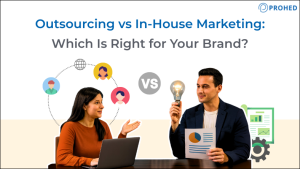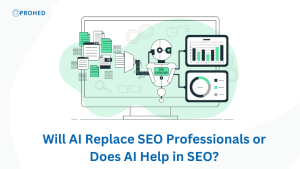In the ever-evolving world of digital marketing, businesses are under constant pressure to achieve more with less—more conversions, more reach, and more customer engagement while managing tighter budgets. One metric that captures this pursuit perfectly is Return on Ad Spend (ROAS). For marketers, ROAS is the north star, telling them whether their campaigns are truly paying off.
But achieving high ROAS is easier said than done. With consumer preferences changing daily, digital ad costs rising, and competition intensifying, traditional marketing approaches often fall short. This is where Artificial Intelligence (AI) steps in, transforming how brands create, optimize, and allocate their marketing resources.
From hyper-personalized ad targeting to predictive budget allocation, AI is no longer a buzzword, it’s the engine driving measurable success in modern campaigns.
In this blog, we’ll explore how AI-based marketing is revolutionizing advertising and helping businesses skyrocket their ROAS.
Understanding the Key Concepts
What is ROAS?
Return on Ad Spend (ROAS) is a performance metric that tells you how much revenue you earn for every dollar spent on advertising.
Formula:
ROAS = Cost of Ads / Revenue from Ads
For example, if you spend ₹1,00,000 on ads and generate ₹5,00,000 in revenue, your ROAS is 5:1—meaning you earn ₹5 for every ₹1 invested.
- High ROAS = efficient and profitable campaigns.
- Low ROAS = wasted ad spend.
In today’s competitive market, businesses can’t afford trial-and-error ad strategies. This is where AI becomes a game-changer.
The Role of AI in Modern Marketing
AI brings automation, speed, and intelligence to marketing tasks that were once manual and time-consuming. Instead of relying on assumptions, marketers can now:
- Analyse billions of data points in real time
- Predict consumer behaviour with high accuracy
- Personalize messages at scale
- Continuously optimize ad spend without human intervention
This isn’t just efficiency, it’s marketing precision at scale, which directly boosts ROAS.
AI-Powered Ad Campaign Optimization
Targeting & Predictive Analytics
Traditional targeting relies on demographics and broad audience segments. AI goes deeper.
Behavioral Targeting: AI predicts what customers are likely to buy based on browsing patterns, purchase history, and online activity.
Lookalike Audiences: AI finds new potential customers who behave like your best existing customers.
Predictive Modeling: It forecasts which audience segment will bring the highest value, allowing smarter targeting.
Example: Netflix uses AI-driven predictive analytics to recommend shows. Marketers use the same principle to predict what product a user might want next.
Automating Bids & Budget Adjustments
Manually adjusting ad bids across platforms like Google Ads or Meta Ads is impossible at scale. AI enables real-time bid optimization, automatically increasing or decreasing bids based on:
- Device type
- Time of day
- Audience segment
- Conversion probability
This ensures that every rupee spent works harder, preventing waste on low-value clicks.
Example: E-commerce brands using AI-driven bidding have seen up to 30% higher ROAS compared to static bidding strategies.
Ad Creative & Copy Personalization
Creative quality makes or breaks an ad campaign. AI tools now generate ad copy, images, and even video scripts tailored to specific audiences.
- Dynamic Creative Optimization (DCO) changes ad elements (headline, CTA, image) in real time.
- AI copywriters like Jasper or Copy.ai generate variants for A/B testing at scale.
- Personalization ensures users feel like the ad “speaks directly to them.”
Example: Spotify runs personalized playlist ads like “Soundtrack of Your Summer,” powered by AI analyzing listener behaviour.
Real-Time Optimization with AI Pixels
AI-powered tracking pixels take performance monitoring beyond basic clicks and impressions.
Behaviour Analysis: Tracks micro-interactions (hover, scroll, dwell time).
Adaptive Optimization: Learns which creatives perform best with specific user types.
Continuous Learning: Improves targeting and bidding decisions over time.
This means your campaigns aren’t just “set and forget.” They evolve with every single impression, boosting ROAS continuously.
Smarter Marketing Budgeting with AI
Dynamic Budget Allocation
AI doesn’t just optimize ads—it optimizes where to spend your ad budget.
- Shifts spend automatically to high-performing channels (Google, Meta, TikTok, LinkedIn).
- Reduces waste on underperforming campaigns.
- Ensures maximum impact for every dollar invested.
Example: A fashion brand using AI-based budget allocation saw a 20% increase in sales by shifting budgets daily based on performance trends.
Pricing & Spend Optimization
Pricing plays a critical role in ROAS. AI-powered dynamic pricing models adjust product prices based on:
- Demand fluctuations
- Competitor pricing
- Customer buying behavior
When combined with AI ad optimization, businesses maximize both sales volume and profit margins.
Think of airline ticket pricing, always changing dynamically. The same principle works in e-commerce and retail.
Data-Driven Insights & Predictive Forecasting
AI can simulate multiple budget scenarios and predict outcomes. For example:
- “What if I increase Facebook Ads budget by 20%?”
- “What happens if I cut Google Ads spend in half?”
Predictive forecasting helps marketers plan smarter campaigns and avoid budgetary risks.
Implementation Roadmap
Selecting the Right Tools
Choose AI platforms aligned with your goals:
Ad Optimization: Koast.ai, Albert.ai, Revealbot
Budgeting & Pricing: Symson, Prisync
Creative Personalization: Jasper, Persado, Canva AI
Evaluate features like integration, ease of use, and analytics depth.
Integration Steps
Connect the AI tool with ad platforms (Google Ads, Meta Ads).
Sync CRM data for customer behaviour insights.
Implement AI pixels for real-time performance tracking.
Run small-scale pilot campaigns.
Scale gradually as AI models learn and improve.
Best Practices for Deployment
Start Small: Test with limited campaigns before scaling.
Set Clear KPIs: Define success metrics (ROAS, CPA, CAC).
Combine AI + Human Oversight: Use AI for automation, but let humans guide strategy.
A/B Test Constantly: Even AI models benefit from testing.
Challenges & Considerations
Data Privacy & Ethical Concerns
AI thrives on data, but strict regulations like GDPR and India’s DPDP Act require ethical data handling. Transparency in how user data is used is non-negotiable.
Technical Complexity & Scalability
Integrating AI isn’t plug-and-play. It requires:
- Skilled teams
- Proper infrastructure
- Training for marketers
Brands must be prepared for initial complexity before reaping benefits.
Dependency on Quality Data
AI is only as good as the data it’s trained on. Inaccurate or insufficient data leads to poor targeting and wasted budgets. Ensuring clean, updated data pipelines is essential.
Future Outlook
What’s Next for AI in Marketing?
Hyper-Personalization: Ads that adapt in real time based on mood, weather, or context.
Voice & Conversational AI: Ads delivered through voice assistants like Alexa or Google.
AR/VR Integration: Immersive ad experiences in metaverse-style environments.
Evolving Models of Creative-AI Collaboration
The future isn’t AI replacing marketers—it’s AI augmenting human creativity. Marketers set the strategy, and AI executes with speed and precision. The blend of human storytelling and AI efficiency will define next-gen marketing.
Conclusion
AI is no longer a futuristic concept—it’s the present reality of marketing. By combining predictive targeting, automated bidding, dynamic budgeting, and creative personalization, businesses can unlock unprecedented levels of efficiency and profitability.
The result? Skyrocketing ROAS and smarter use of every marketing dollar.
For marketers willing to embrace AI, the rewards are clear: better performance, lower costs, and campaigns that resonate deeply with audiences. The question isn’t whether AI will transform marketing—it already has. The real question is: Are you ready to leverage it to maximise your returns?




